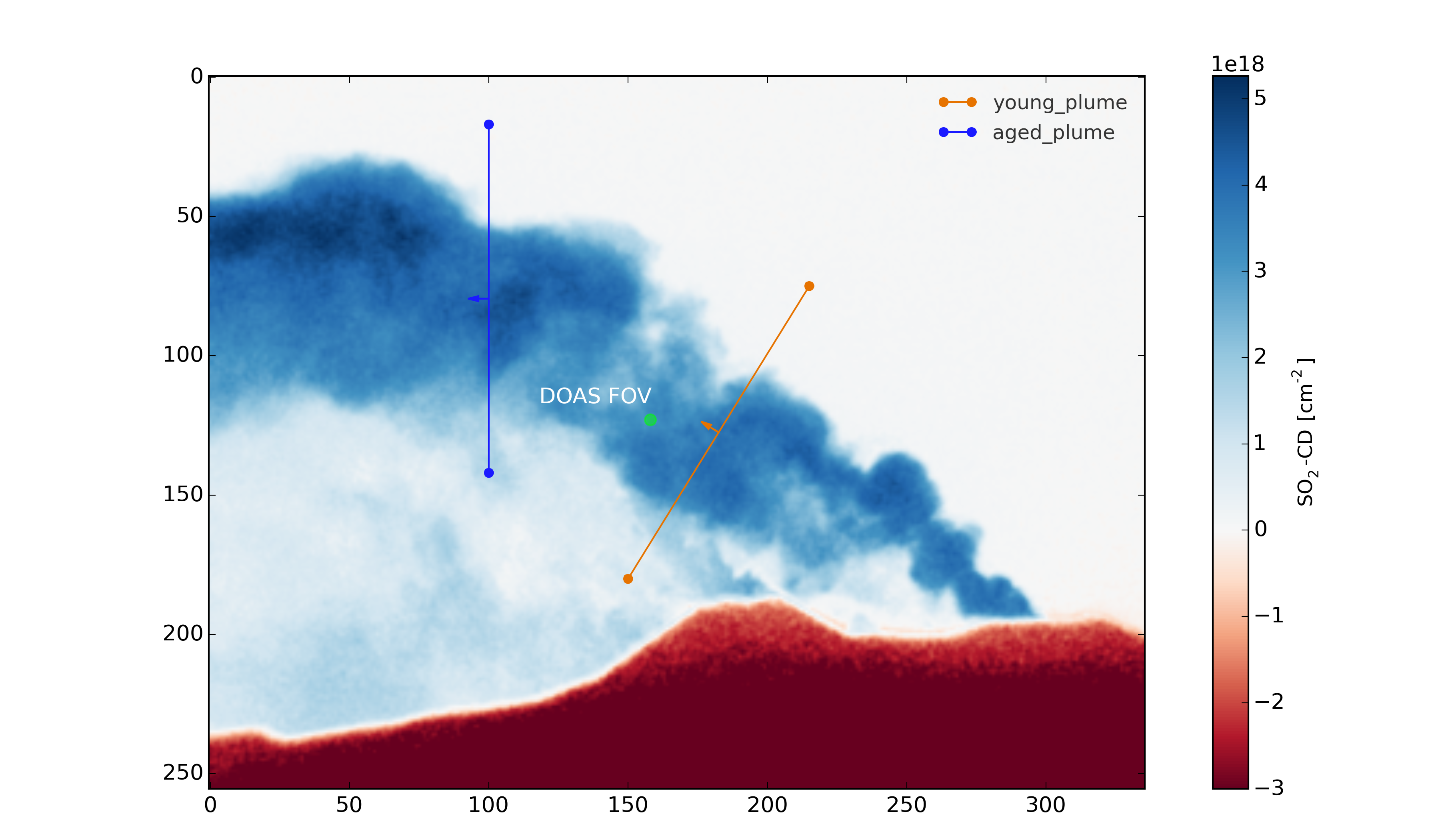Welcome to Pyplis¶
Official website of Pyplis, a Python software containing algorithms and analysis routines for UV SO2 camera data. Apart from the API documentation, this website includes additional relevant information about the software (e.g. installation details, access of example data) as well as useful practical information that helps getting started with Pyplis.
A paper introducing the software is published in the Journal Geosciences (MDPI). If you find Pyplis useful for your analysis, we highly appreciate if you acknowledge our work by citing the paper.

Screenshot of the Pyplis paper. Please acknowledge our work by citing the paper.
The software can be downloaded from the Github page or installed via PyPi using:
pip install pyplis
from the command line.

Calibrated SO2 column density image showing 2 plume cross section lines and the position of the FOV of a co-located DOAS instrument.
Click here to see a video showing an animation of Mt. Etna SO2 emissions recorded on 16/09/2015
Contents:
- Introduction
- Plot gallery
- Primer on data import
- Example scripts
- Introductory scripts
- Examples for emission rate analysis
- Example 1 - Creation of analysis setup and Dataset
- Example 2 - Measurement Geometry
- Example 3 - Plume background analysis
- Example 4 - Preparation of AA image list
- Example 5 - Automatic cell calibration
- Example 6 - DOAS calibration
- Example 7 - AA sensitivity correction masks
- Example 8 - Plume velocity retrieval (Cross correlation)
- Example 9 - Plume velocity retrieval (Optical flow Farneback)
- Example 10 - Import plume background images
- Example 11 - Image based signal dilution correction
- Example 12 - Emission rate analysis (Etna example data)
- API
- Setup classes
- Data Set object
- Geometrical calculations
- Image base module
- Image list objects
- Plume background analysis
- Plume velocity analysis
- Camera calibration base class
- Cell calibration
- DOAS calibration
- Emission rate retrieval
- Signal dilution correction
- Low level utils
- Further processing classes
- Fitting / Optimisation algorithms
- Mathematical model functions
- I/O routines
- Custom image import methods
- Helper functions
- Forms and geometrical objects
- Supplementary material
- Changelog
